By Jay Bell
Up until quite recently, the 338 Lapua Magnum cartridge was the preeminent sniper caliber with 338 Norma Magnum looking ready to surpass its popularity. The war in Ukraine caused a resurgence in the Lapua caliber, gifting it a stay of execution, of sorts. There were numerous weapons systems available at the time sniper ammunition was needed, and 338 Lapua Mag fit the bill. It’s unclear how much this spike may add to its life span, though. Some say a decade or more. Regardless, the long-term implications for the round’s future use my today’s militaries are the same. 338 Norma Magnum is set to take the Lapua’s place on the throne of tactical long-range cartridges.
This article will dig a little deeper and provide more information about round’s ascension.
Let’s start with what’s included in the 338 NM kingdom and what is not. Its will eventually reign over the future of U.S. military and law enforcement sniper applications. It will not be the king of civilian long-range precision competitions like “The King of Two Miles.” It does not have the necessary powder capacity to dominate that domain. That arena will be left to larger platform cartridges for the foreseeable future. It does have a chance at becoming the King of One Mile… however, its little brother, 300 Norma Magnum, seems to have a better shot in this dominion since there’s no need for projectile payload in a target shooting competition.
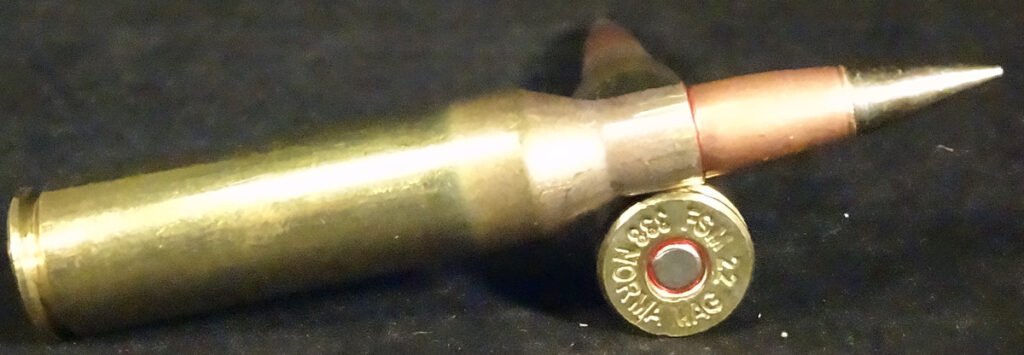
The jury is out on whether the 338 NM will be the king of international military and law enforcement, as these groups fully adopted the 338 Lapua Mag (however, the U.S. didn’t). Eventually, in 10 to 20 years, the 338 NM will replace the 338 Lapua Mag in any holdout groups or countries. This is because the 338 NM can do everything the 338 Lapua Mag can do, but in a slightly smaller package. This includes smaller rifle actions and chambers, slightly less brass, and slightly less propellants. This might be irrelevant to the individual shooter, but it’s significant to defense departments when they’re paying for millions of rounds.
SO WHY THE CHANGE IN THE U.S.?
The U.S. has held .50 caliber and 300 Winchester Magnum as the prior sniper caliber of choice. There was a brief glimmer of hope for 338 Lapua Mag in 2014, when Remington Defense won the U.S. Department of Defense’s Precision Sniper Rifle (The Mk 21) competition that fired 338 Lapua Mag, 300 Winchester Magnum, and 308 Winchester. This program failed. However, military and law enforcement officers need a man-portable, robust system that can reach extreme distances in the range of 2500 to 3000 meters. The .50 caliber could meet that requirement; however, the weight of the weapon and the ammunition were and are always a challenge.
In addition, the .50 caliber faced some political stigma as being “overkill”, especially in LE and other applications. The .50 caliber Browning Machine Gun (50 BMG) started its life as a military machine gun round that was anti-material and anti-personnel. Ronnie Barrett turned the .50 caliber into a shoulder fired weapon in the 1980’s. His modern rifle design and muzzle break made shooting the .50 caliber manageable. However, the 660-grain payload is devastating on human targets and in any scenario besides combat the risk of extensive collateral damage to people and property is typically deemed too great for the round to be considered in any civilian roles, and even in some military roles, as well.
WHAT ABOUT 300 WIN MAG?
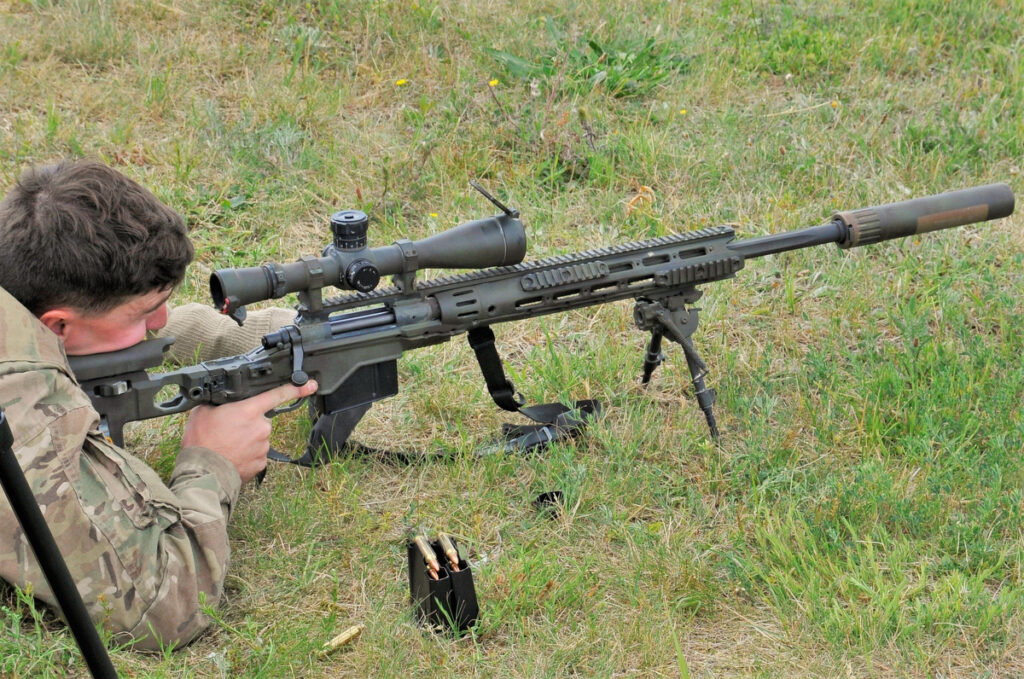
Historically, 300 Win Mag has struggled with longer distances, and it’s a belted magnum. Belted magnums headspace off the belt at the base of the cartridge instead of the shoulder. Headspacing from the shoulder is universally considered to give consistently better accuracy. In addition, the 300 Win Mag is only a .30 caliber bullet, and it does not have the ability to go up to 300 grains, as the .338 bullets can and do. This reduces kinetic energy and limits the round’s use in the destruction of vehicles. It also has a major impact on armor piercing capabilities in 300 grains with a tungsten core. Taking out an engine block is well within the scope of a 300 grain Armor Piercing projectile.
Moreover, the new Barrett MK 22 MRAD (Kudos again to Ronnie) is the next generation sniper weapon system, and it comes chambered in 338 NM, 300 NM, and 308 Win. This is the first weapon that has been chambered in the 338 NM for the U.S. armed forces. In addition, the Army/SOCOM is ordering these rifle systems by the truckload. Barrett’s initial contract from the Army is nearly $50m for around 2,800 weapon systems. This contract (W15QKN21F0192) was awarded in March 2021. Around $8m was funded with the base award and the rest will be rolled out over the term of the 5-year indefinite delivery/indefinite quantity contract. The contract is forecasted to be completed in March 2026. This does not include all the weapons that will be ordered by other (three-letter) agencies. Under the contract, weapons will probably be delivered to the Army, Navy, Air Force, USMC, and SOCOM, as the Army is typically the central buying hub for the various services. In addition, the U.S. Army recently awarded a 5-year, $157m contract to Sig Sauer for ammunition in both the 300 NM and 338 NM calibers.
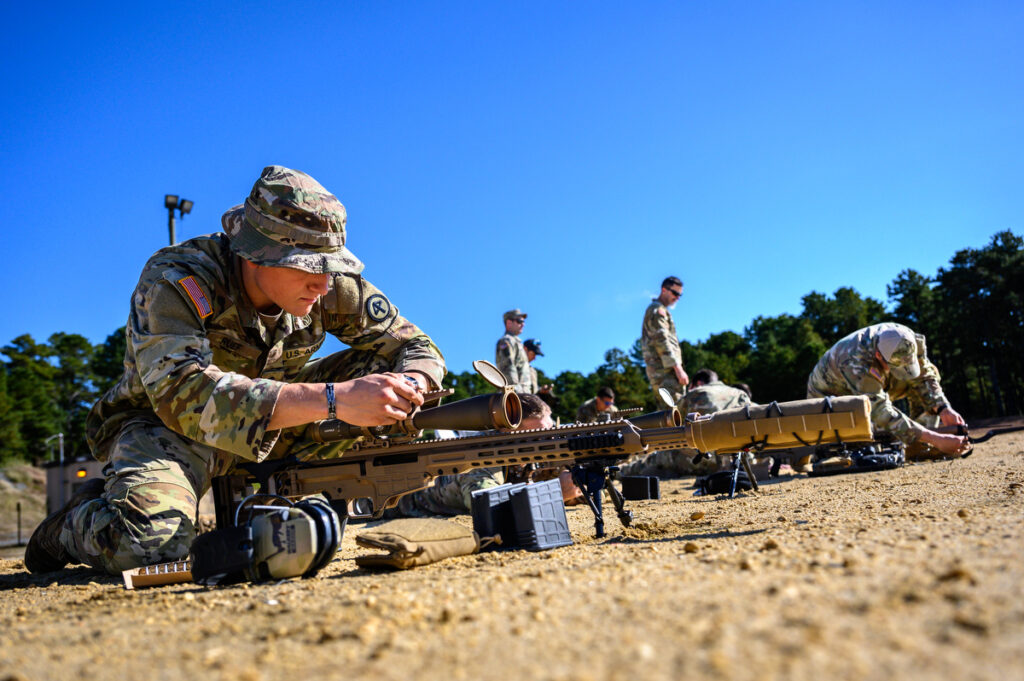
SOCOM’S LATEST MACHINE GUN
The Lightweight Medium Machine Gun (LWMMG) in 338 Norma Mag has been around since 2012. General Dynamics created this next generation weapon system to get .50 cal performance but at the weight of a standard machine gun. General Dynamics was ahead of their time with a great idea. Unfortunately, their effort was unsuccessful and was basically forgotten. Then, around 2020, SOCOM identified the need for a lightweight medium machine gun in 338 Norma Mag and has been ramping up for a full weapon competition ever since. This included an ammunition contract for the 338 Norma Mag Multi-Purpose round that was awarded to UDC USA, Inc. There have been a couple of evaluation contracts for weapons, including one that was won by SIG Sauer for its MG 338 machine guns in 338 NM. The main competition will close in early 2024 and maybe we’ll have a winner in late 2024.
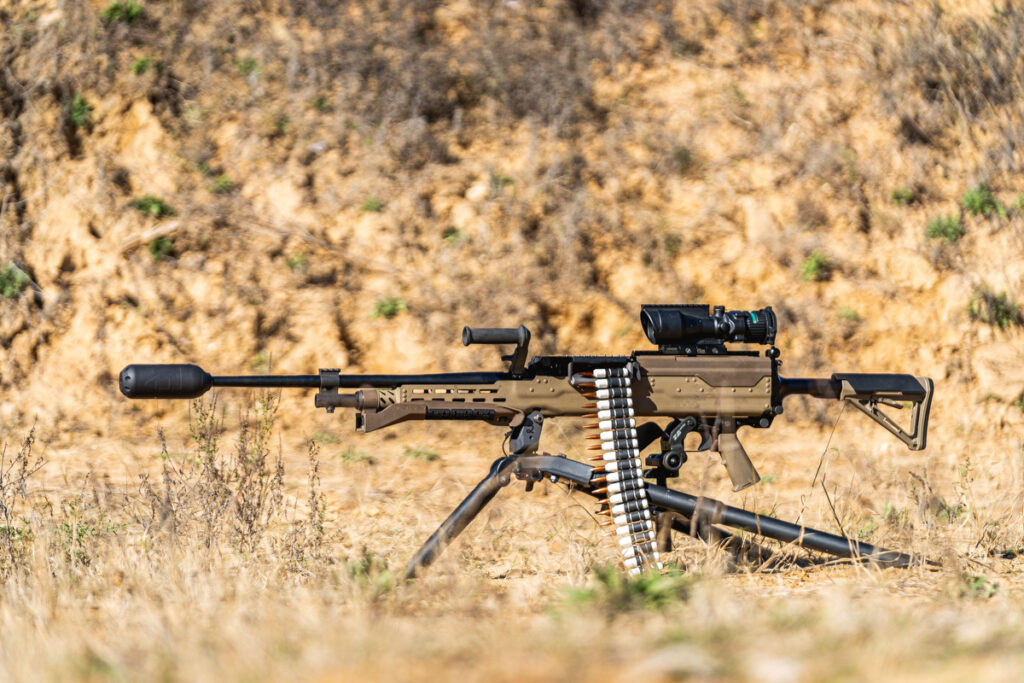
SO WHY THE 338 NM NOW?
The 338 Lapua Mag has been the king of the international sniper community for decades. This caliber and weight bullet range (250 to 300 grains, typical) is the right combination for this application. However, the latest modern propellants are fine-tuned for maximum performance and can get the .338 caliber bullet to the ideal velocities in the smaller chassis of the 338 Norma Magnum, which could not be accomplished 30 years ago in the 338 Lapua. In addition, the shorter length of the Norma cartridge opens up the number of rifle actions that can fire the round.
The number of actions that can fit the 338 Lapua Mag length cartridge is limited. The 338 Lapua Mag is designed to be fired in a belt-fed machine gun. However, since the 1980’s there haven’t been any serious weapon development efforts to fire the 338 Lapua Mag in a machine gun. The 338 NM has been fired in machine guns since General Dynamics created the prototype Lightweight Medium Machine Gun in 2012. This powerhouse system was never adopted by any domestic or international military group, though.
NO BETTER ALTERNATIVE
Why doesn’t the sniper community use “king of two miles” calibers like 375 Cheytac or 375 Enabler? The KO2M distance is 3219 meters. According to the competition’s rules, weapons cannot exceed 40 pounds. Compare this to the Barrett MRAD (MK22) at an extremely light 15.2 pounds. The length of a typical KO2M rifle is 1500mm to 1600mm and is not collapsible. Again, compare this to the MRAD at 1255mm, fully extended, and much shorter when collapsed for transport. The KO2M weapons and calibers are not designed for combat, they are designed for maximum accuracy at maximum distance. Therefore, a larger and heavier cartridge is not an issue, as no one is carrying these rifle systems for days.
WHO DESIGNED THE 338 NM CALIBER?
Jimmie Sloan is the inventor of the 338 NM caliber. It began as a wildcat caliber in 2008 and entered production with Norma in 2009. It was certified by CIP in 2010. So, clearly, this wildcat was on the fast track to success from the very beginning.
ADOPTION HEADWINDS
The only competitor to the 338 NM is its brother the 300 NM. At worst, they could end up being co-kings. The 300 NM would dominate in precision long-range and the 338 NM would dominate in combat and anti-material requirements. I believe the 300 NM has an advantage in the number of great bullets available to deploy. I think the 338 NM will see more bullets developed for it in the near future. One popular commercial website has 286 products for .30 caliber bullets and only 72 in .338 caliber bullets. The numbers will never be equal, though, since there are so many .30 caliber cartridge offerings and so few in 338. The additional payload capabilities of the 338 NM allow it to carry more tungsten in a penetrator or other increased energetic materials for downrange impact.
THE FUTURE OF 338 NORMA MAGNUM
Expect to see the following in the coming years for the 338 NM:
- More companies will offer sniper and hunting rifles chambered in this caliber. First, because it’s a good caliber, and second to follow suit with what the U.S. government is using.
- More weapon systems will be offered in 338 NM. In the past, the systems were created by the end user and there was no standardization. The 408 Cheytac was one of the first to be offered as a complete system based on a cartridge and now Barrett follows suit with its MK 22 MRAD (if you have a spare $22k). These packages included: a weapon, barrels, optics (day and night), a ballistic computer system, and more.
- A suite of military tactical ammunition will be developed, similar to the way the .50 caliber spawned a suite of purpose-built cartridges. This will include sniper rounds and machine gun rounds. Right now, the U.S. military only has two rounds for this caliber, the Army’s M1162 300-grain AP round and SOCOM’s 272-grain Multi-Purpose round. The .50 caliber currently has around a dozen fielded options, dozens of commercial variations, and a couple dozen inactive configurations. Obvious potential versions would include a tracer, M962 Saboted Light Armor Piercing (SLAP), and Mk211 (High Explosive Armor Piercing), or as near to these versions as requested by the government.
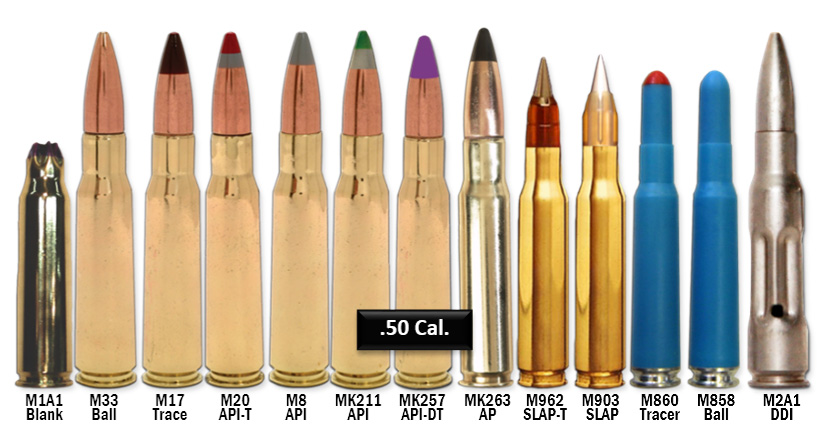
SIGNIFICANT GROWING PAINS
This is the first time in history a sniper caliber will become a machine gun caliber. This is nothing to be taken lightly, this may well be a major undertaking. There will be challenges now in the development of future rifles. There will be challenges down the road with sniper ammo not running in machine guns and machine gun ammo not being able to hit the broadside of a barn.
There are significant differences between ammunition optimized for long-range precision use and use in a machine gun. For instance, the brass thicknesses between sniper-grade and machine gun-grade cartridges are different. There are also major differences in the hardness, seating depth, and performance of primers that must be optimized for the two, very different, applications. Ammunition issues across sniper and machine gun platforms using the same caliber may come with a dearth of problems such as accuracy, reliability and other performance issues related to operating temperatures, barrel erosion, and even wear and breakage of weapon system components that may be novel to each system.
It’s clear that long-range precision ammo and machine gun ammo are not interchangeable. The two will have to be developed separately, end-users must learn to differentiate them through education, and they must be carefully segregated in the field in order to maintain safety and performance. Let’s not forget that the .50 caliber cartridge had significant growing pains when it went from a machine gun caliber to a sniper caliber. So, history tells us these issues can be overcome.
On the whole, however, this is an exciting transition in the ammunition and weapon worlds. We should all be looking forward to the enhanced capabilities afforded by the continuing adoption of 338 Norma Magnum. More to follow… 100% guaranteed.





